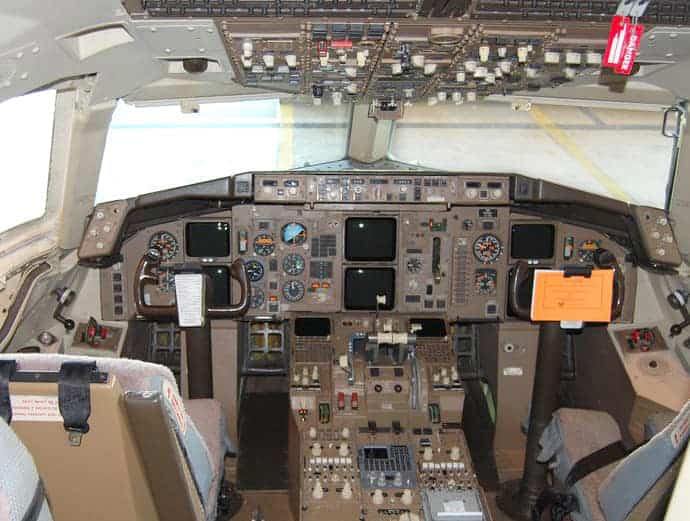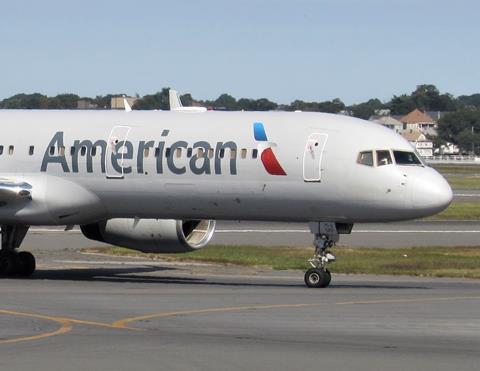Speed Decline, Pitching Nose-Down: Airborne Incident, NTSB Investigation

Crew alarmed by speed decline before an American Airlines 757 abruptly pitched, nose-down.
What happened?
With 113 people on board on September 6, 2018, an American Airlines Boeing 757-200, flying from Edinburgh, Scotland, to New York (JFK), was descending toward JFK airport when the aircraft experienced an abrupt maneuver: a speed decline, then an abrupt pitch, nose-down.
Several flight attendants were clearing the cabin for landing at the time of the plane’s shift, causing six attendants to fall and sustain injuries. Among the injuries, one attendant received multiple bone fractures, requiring hospitalization.
The aircraft continued for a safe landing and remained on the ground for 31 hours before returning to service.
Investigators probing the abrupt maneuver indicated the crew suddenly pitched the aircraft nose-down after realizing the airspeed had unexpectedly “bled away.”
As the aircraft neared its cleared level of 12,000 feet, its “altitude hold” mode engaged. The captain then activated the “flight level change” mode ahead of receiving a further clearance to 7,000 feet—with an instruction for a “good rate” of descent through 9,000 feet.
This “flight level change” mode carries out a descent with idle thrust, using pitch control to maintain the required airspeed. The aircraft was flying faster than desired, so the crew dialed the airspeed down to 250 kn.
As the thrust levers retarded, they reached their aft stop and the auto-throttle entered the “throttle hold” mode—fixing the thrust levers at their new position.
But the aircraft was still attempting to hold the target altitude which remained at 12,000 feet. With the thrust levers retarded, the autopilot started to increase the pitch, and this resulted in the airspeed falling below 250 kn.
Approximately 90 seconds after the switch to “flight level change” mode, the 757 pitched to 6° nose-up and its airspeed had fallen to 186 kn.

The crew included a third pilot in the cockpit, in the relief role, and he testified to the National Transportation Safety Board (NTSB) that he realized the aircraft’s airspeed was concernedly low and risked approaching a stall.
During the incident, the third pilot repeatedly called “speed” in an increasingly raised tone, before loudly urging nose-down input, “Push, push it over. Get the autopilot off. Push it over.”
Flight-data recorder information shows the thrust levers rapidly advanced, engine power increased, and the aircraft started accelerating. Within 10 seconds of the thrust increase, the aircraft had pitched to 10° nose-up, and the control column was quickly pushed forward to pitch the aircraft 3° nose-down.
This generated a sharp change in vertical acceleration from 1.476g to negative 0.156g over the course of 11 seconds.
The crew subsequently recovered the aircraft, reengaging the autopilot with the target altitude of 7,000 feet, and the 757 landed on JFK’s runway 22L about 13 minutes after the incident.
Although the NTSB has given preliminary flight-recorder data from the incident in an information docket, the agency has yet to reach conclusions about the circumstances of the event
However, prior events —such as the accident involving an Asiana Boeing 777 at San Francisco in 2013—have given rise to a situation dubbed the “flight level change trap” in which pilots wrongly believe the aircraft is maintaining airspeed, unaware that the thrust levers are unresponsive in a “flight level change” descent.
See more about the NTSB docket.
Source: Flight Global, “Crew alarmed by speed decay before American 757 abruptly pitched down,” David Kaminski-Morrow, February 28, 2021.
Register today for a TapRooT® Root Cause Analysis Training Course
TapRooT® training is global to meet your needs. If you need particular times or locations, please see our full selection of courses.
If you would like us to teach a course at your workplace, please reach out to discuss what we can do for you, or call us at 865.539.2139.
Stay engaged with your skills and training: Follow along on our blog; join our Wednesday TapRooT® TV videos at 12 pm EST; connect with us on Facebook, Twitter, Instagram, Pinterest, LinkedIn, and YouTube.

Get your team ready for the one conference you must attend in 2021
The 2021 Global TapRooT® Summit, June 14-18, 2021, in Knoxville, Tennessee, is the best setting to help you develop your roadmap to success. Register your team to attend and meet global industry leaders and network with instructors and professionals.
Look through the 2021 Global TapRooT® Summit schedule to browse the tracks and then . . .
- Peruse and take advantage of the Pre-Summit Courses (June 14-15).
- Read Summit FAQ.
- Save money! Register 3 or more attendees simultaneously for a discount. Also, save when you register for the 3-day Summit plus a 2-day Pre-Summit course.



